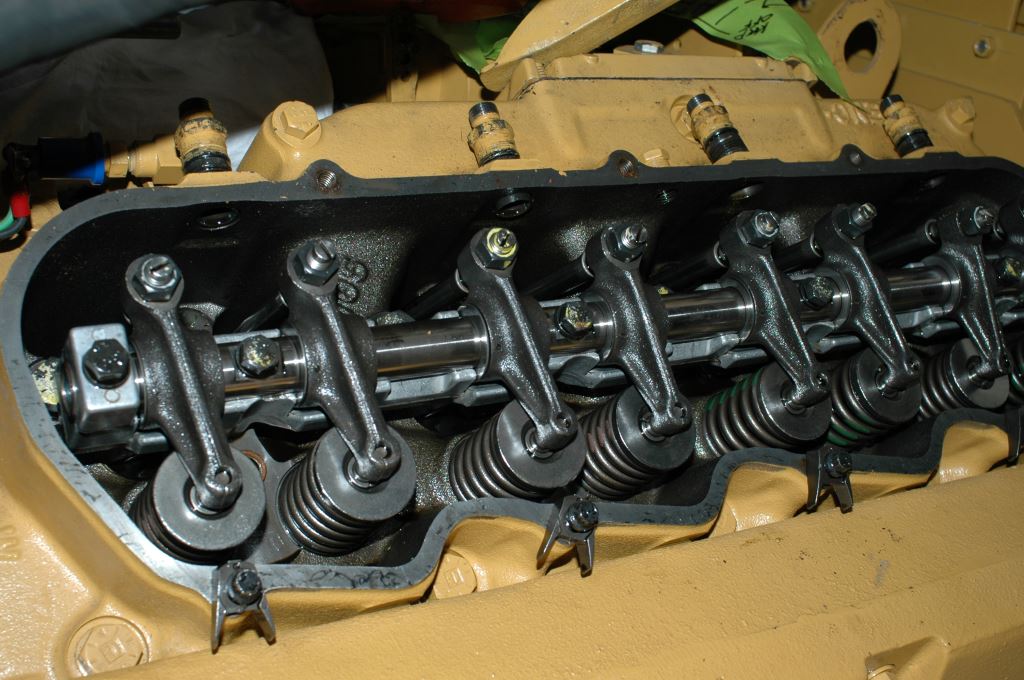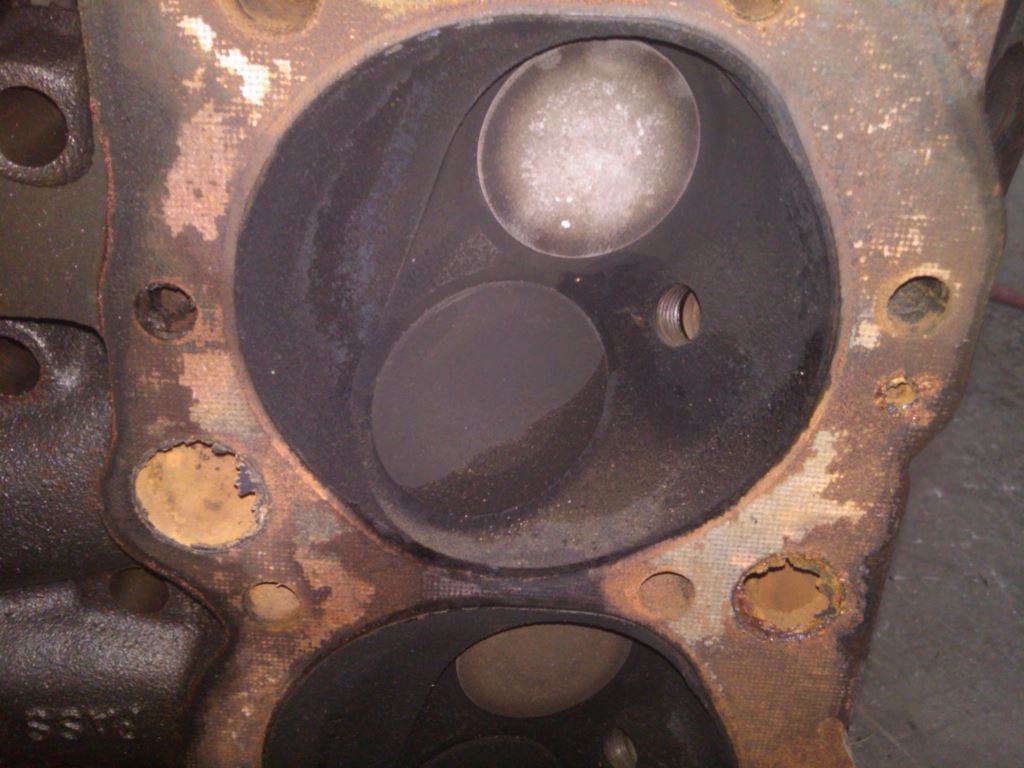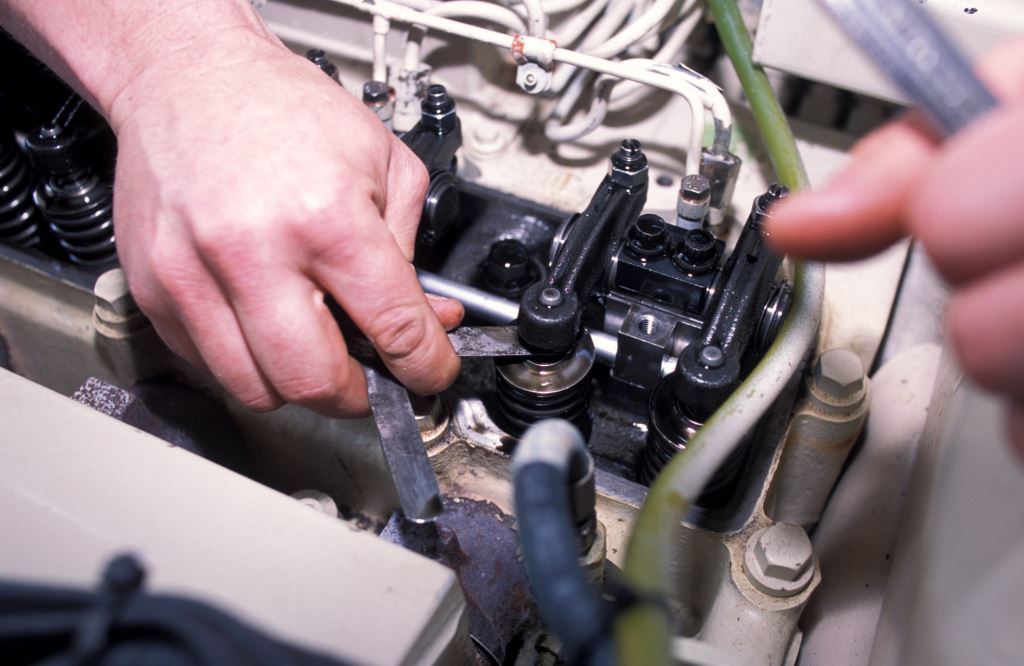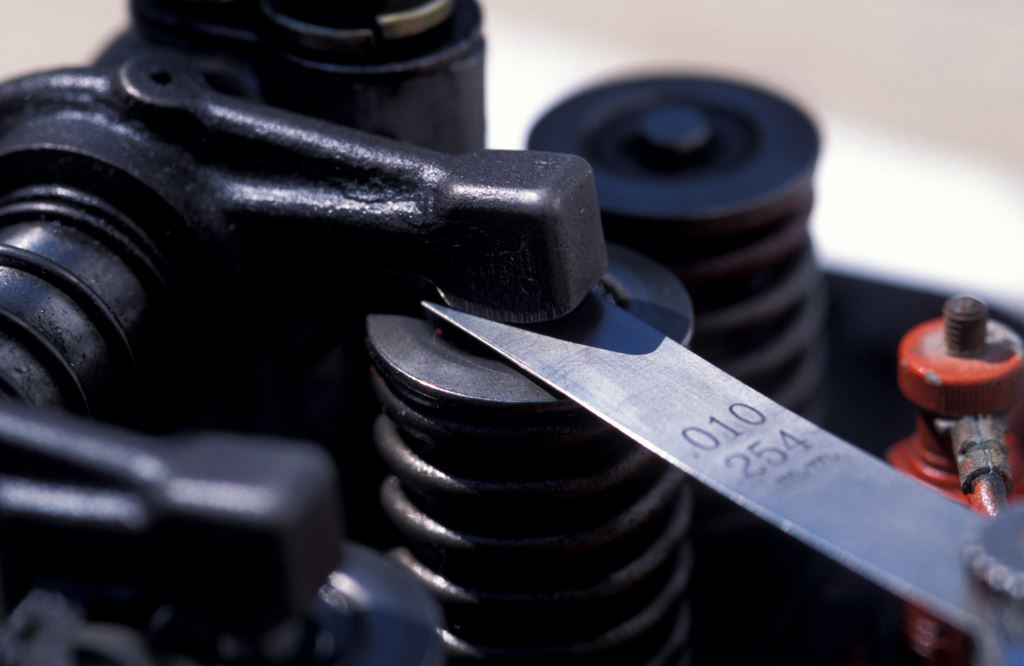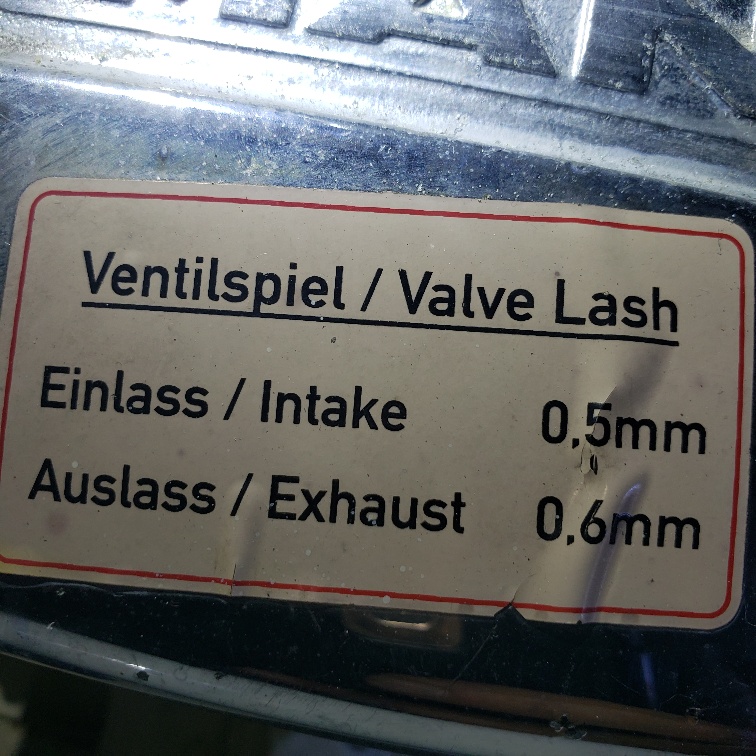“For Sale by Owner; Buyer Beware” and “The Importance of Valve Adjustment”
Text and photos © 2021 Steve D’Antonio Marine Consulting, Inc.
From the Masthead
For Sale by Owner; Buyer Beware
With boat sales progressing at a furious pace for the past nine months, it only stands to reason that more of my clients are encountering the for sale by owner (FSBO) scenario. Selling a vessel without using a broker can be very attractive for one obvious reason, the seller avoids a potentially hefty commission fee, and who could be disparaged for attempting to save money? However, as is often the case, it’s not as simple as it may seem.
While this approach offers potentially clear financial advantages for sellers (one of my colleagues jokingly refers to FSBO as ‘For Seller’s Benefit Only’), it’s not entirely without risk, especially if you haven’t done it before. That risk and reward can and should be weighed. More importantly, however, the risk for the buyer is potentially far greater, and once again especially for the uninitiated. In a traditional listing, the commission is included in the asking price. The commission can be considered part of the sale price of the vessel, so the buyer is in fact paying this, and the buyer often has no representation in a FSBO deal. Therefore, the buyer is taking a greater risk, while receiving none of the reward.
In a broker-less sale, the following are aspects worthy of consideration, for both sellers and buyers, but buyers in particular. These are services a buyer’s broker should provide, and in doing so it’s how he or she earns his or her commission.
- The buyer uses the broker’s vetted and up to date legal forms and the broker can explain any nuances or questions
- The buyer’s deposit is secure in the broker’s bonded trust account
- The broker confirms the closing location
- The broker tracks the deadlines for all due dates
- The broker helps organize (but doesn’t necessarily select, more on that here) the team of essential players including hull and engine surveyors, haul out location, and a captain for the sea trial
- The broker acts as a buffer between the buyer/seller and the survey crew, allowing them to do their work, for which they have limited time. In the absence of a broker, the survey crew shoulders a greater burden, and are often distracted as a result.
- The broker attends the survey and sea trial on the buyer’s behalf, and acts as the master of ceremonies and provides an extra pair of eyes
- The broker knows what’s common and acceptable when it comes to managing survey findings and conducting reasonable negotiations for settlement
- The broker can explain and direct the buyer to seek legal advice on payment of taxes and duty; especially important in the case of an “offshore” closing, if the vessel is foreign flagged, or if the buyer is foreign
- The broker advises the buyer who to engage for documentation of vessel and registration of a tender
- The broker should help the buyer secure insurance and confirm it’s in place when possession is taken
- The broker can act as an arbiter in the event of a discrepancy or dispute
- The broker represents a knowledgeable resource for service providers, marine financing, vessel insurance, documentation, legal advice, etc.
Once again, these are all tasks with which the broker should be familiar, and should be providing as part of his or her services. Could you handle all of these tasks on your own? No doubt some buyers can, and they do so successfully, but many are unable to, or worse believe they can and only find out later they missed an important component, and then find themselves scrambling, after the deal has been closed.
The value of the ‘buyer’s broker’ scenario is predicated on having a broker who is conscientious, and ideally is a member in good standing (you should confirm) of a regional yacht brokerage association. In Florida, the broker is required by law to have a valid yacht sales license (you should confirm). Select, knowledgeable brokers often obtain the gold standard credential and become a Certified Professional Yacht Broker (CPYB), which requires competency testing and continuing education (again, you should confirm membership, I’ve encountered imposters). Above all else, the broker should be willing and capable of fulfilling all of the above-mentioned bullet points.
Think carefully before you proceed down the FSBO path, especially as a buyer without representation.
This month’s Marine Systems Excellence eMagazine feature covers the subject of valve adjustment. I hope you find it both interesting and useful.
The Importance of Valve Adjustment
Rocker arms, rocker arm shaft, and valve springs can all be seen in this image, the valves themselves reside within the spring and under the head and are thus not visible.
Diesel engines are legendary for their reliability, durability and economical use of fuel. There is, however, a price to be paid for these attributes, diesel engines are typically heavier than their gasoline brethren, and they are also more costly to produce as a result of the robustness of the components (required for higher compression), and finer tolerances, particularly in the fuel delivery system, often measured to the ten thousandth of an inch.
There’s one maintenance item that will, if deferred, quickly negate many of a diesel engine’s virtues. Valve adjustment is critically important to every four-cycle engine’s operation (virtually all modern inboard diesels are four cycle, with the legacy Detroit Diesels being an exception), yet it is also among the most frequently overlooked or forgotten tasks. In many cases, if an engine continues to run and appears to be delivering reliable service, then the perception is that it needs no maintenance, service or adjustment, yet nothing could be further from the truth.
Improper valve adjustment can lead to poor performance, diminished rpm and increased fuel consumption.
Intake and exhaust valves live and work within an engine’s cylinder head, that four- or five-inch-thick hunk of iron or aluminum that’s bolted to the top of the block. Valves, which are vaguely mushroom shaped, are actuated or opened and closed through a combination of action from the cam shaft and valves springs. The former opens the valves by either lifting a pushrod and rocker arm or, in the case of an overhead cam, by acting directly on the rockers (or “tappets” if you are from the UK or Commonwealth) while the latter draws them shut again through spring tension.
While they are moving parts, intake and exhaust valves themselves are simple components. Here the author holds an intake valve (from his vintage Triumph roadster).
Typically, it’s a delicate, precise operation that occurs at eye-blurring speed. If you’ve ever had the opportunity to see this mechanical choreography in action, while an engine is operating with the valve cover removed, it’s difficult not to be impressed with its oleaginous precision.
A cut-away view of a cylinder head, showing a complete valve assembly (this engine uses dual intake valves). Fresh air would travel through the intake manifold, painted blue here, and then proceed down into the cylinder or combustion chamber.
If, on the other hand, the balance and precision are removed from a valve train (the valve train consists of all of the moving parts associated with valves, lifters, pushrods, springs, rocker arms and the valves themselves), then chaos quickly ensues. The opening and closing of the valves allow fresh air to enter the cylinder, to facilitate the combustion process, and exhaust gasses to exit once the power has been produced and the burn sequence is complete, while both valves remain closed tight during the compression and power strokes). If the clearance between the valve stem and the rocker is not within the engine manufacturer’s tolerance, then the valve will either open too far, or not far enough and it may stay open too long, or not long enough. Any of these scenarios plays havoc with an engine’s operation, upsetting efficiency, power output and fuel economy as well potentially damaging components, and making starting more difficult, and/or producing excess smoke.
The interface between rocker arm and valve stem; a small gap can be seen in this image. It is between these two components where valve clearance is measured.
Valve adjustment should occur at the engine manufacturer’s specified intervals. Some engine’s require valve adjustment at an early, initial interval, 100 hours for instance, and then at regular intervals thereafter, every 250, 400, or 500 hours. Some engine manufacturers specify “hot”, “cold” or both clearances. If the former, the engine should be warmed up and then the adjustment carried out. Consult your engine service manual for precise figures.
If the valve train is upset or removed for any reason, or if the cylinder head is removed or re-torqued, the valves must be adjusted. Adjustment requires clear understanding of the procedure (experience helps, but it’s not necessary, provided you follow the service manual instructions) as well as the ability to use feeler gauges and a wrench. Each valve is adjusted by rotating the engine until a specified valve is closed and its associated piston has traveled to the top of the cylinder (all valve adjustment is carried out with the engine off, however, the engine must be rotated, usually using the starter or a rotating bar, until the piston and valves are in the correct position – the engine cannot and must not be started during the procedure). The correct clearance varies from engine manufacturer to engine manufacturer and sometimes between intake and exhaust valves, however, it is usually in the region of ten or twelve thousandths of an inch, expressed numerically as 0.010” or 0.012” (a credit card, by comparison, is about 30 thousandths of an inch thick). Make certain you are observing the proper units, manuals often provide the clearance in inches and millimeters.
The business end of exhaust and intake valves.
Valves are adjusted in a specific sequence that is detailed in the service manual; however, no valve can be adjusted unless the valve itself is completely closed. That is, the spring is lifting the valve fully into its seat in the cylinder head. If the camshaft is acting on the valve or valve train in any way, then it cannot be properly adjusted.
Provided the access is good, i.e. there’s adequate room above the engine to remove the valve cover and get tools and one’s head into the area, valve adjustment usually takes no more than a few hours, however, its value is incalculable. For most engines, the tools required for this task are simple, a set of combination wrenches (you’ll likely use the box end), a screw driver and a means of rotating the engine, again sometimes the starter and in other cases a tool that’s used to rotate the engine via the fly wheel, or a breaker bar and socket on the crankshaft pulley nut, often called “barring” the engine over. The most important tool in this process is a set of feeler gauges. These are common and inexpensive; however, my preference is for a variety that is less common, one called a “go-no go” feeler gauge.
Here, valve clearance is being checked using a conventional feeler gauge.
Common feeler gauge sets are made of a series of precision, flat steel plates, each a different thickness. A go-no go gauge utilizes a stepped plate, the tip being slightly thinner than the shank, thereby aiding the user in gauging clearance, the thinner part should slide into the gap with slight resistance, while stopping at the step. If the thicker stepped portion fits into the gap as well, the clearance is too great. For marine use, if you can find them, stainless feeler gauges are preferred, otherwise make sure they are well oiled as they are highly prone to turning into a block of rust while in your tool box. To reiterate, during the adjustment process, the engine must be disabled so that it cannot start.
Valve clearances are provided by engine manufacturers, in this case on a decal posted on the valve cover so it can’t be missed.
If valve adjustment is carried out at the manufacturer’s specified intervals, it will ensure economy and efficiency. If your engine and genset call for periodic valve adjustment, and you don’t know when they were last adjusted, don’t take chances, at the very least check the clearances.
